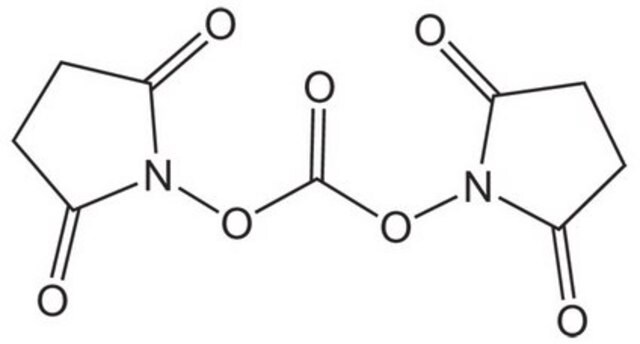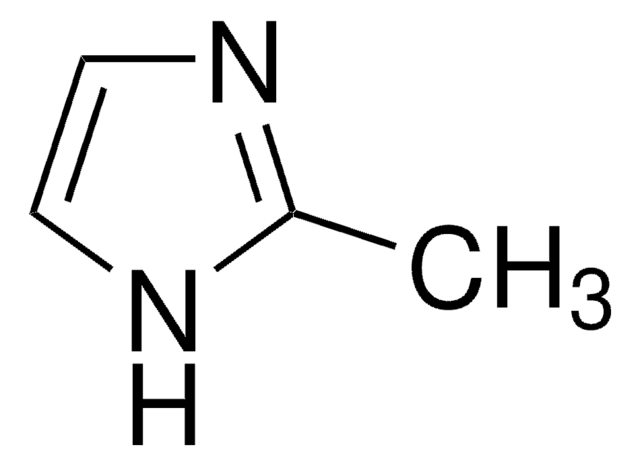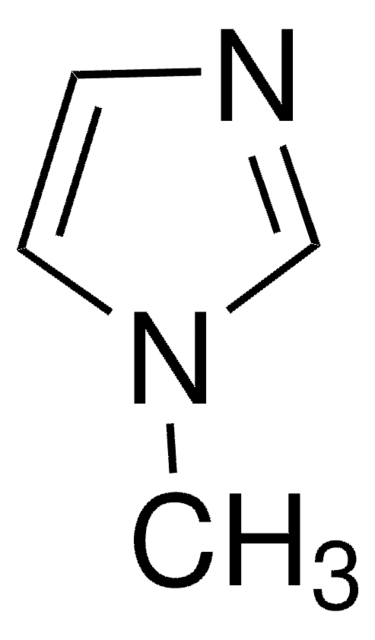21861
1,1′-Carbonyl-di-(1,2,4-triazole)
technical, ≥90% (T)
Sinônimo(s):
CDT
About This Item
Produtos recomendados
grau
technical
Nível de qualidade
Ensaio
≥90% (T)
Formulário
powder
adequação da reação
reaction type: Carbonylations
pf
138-152 °C
aplicação(ões)
peptide synthesis
temperatura de armazenamento
2-8°C
cadeia de caracteres SMILES
O=C(n1cncn1)n2cncn2
InChI
1S/C5H4N6O/c12-5(10-3-6-1-8-10)11-4-7-2-9-11/h1-4H
chave InChI
YHNUDLCUIKMNSN-UHFFFAOYSA-N
Procurando produtos similares? Visita Guia de comparação de produtos
Outras notas
Palavra indicadora
Danger
Frases de perigo
Declarações de precaução
Classificações de perigo
Acute Tox. 4 Oral - Eye Dam. 1 - Repr. 2
Código de classe de armazenamento
11 - Combustible Solids
Classe de risco de água (WGK)
WGK 3
Ponto de fulgor (°F)
Not applicable
Ponto de fulgor (°C)
Not applicable
Equipamento de proteção individual
Eyeshields, Gloves, type P3 (EN 143) respirator cartridges
Escolha uma das versões mais recentes:
Já possui este produto?
Encontre a documentação dos produtos que você adquiriu recentemente na biblioteca de documentos.
Os clientes também visualizaram
Nossa equipe de cientistas tem experiência em todas as áreas de pesquisa, incluindo Life Sciences, ciência de materiais, síntese química, cromatografia, química analítica e muitas outras.
Entre em contato com a assistência técnica













